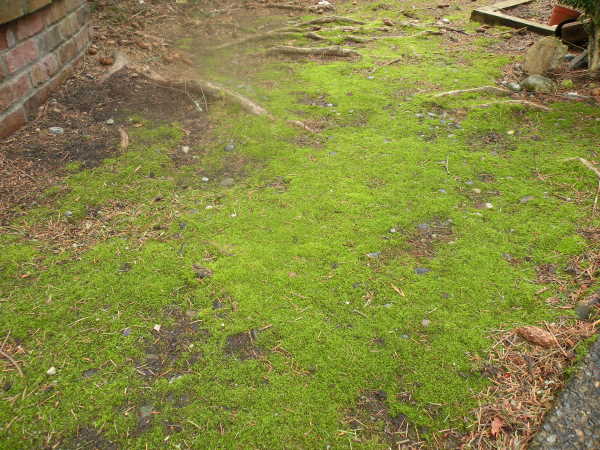Green and fuzzy moss can be highly unsightly within a lawn, but it is also an indication that there is something going on below the soil that needs to be addressed.
What is Moss?
It is a small plant that likes to grow in thin and bare areas. Ideal conditions for moss are not ideal for growing grass and the spore-producing plant can quickly take over a lawn. Luckily, it will not kill the existing grass it merely spreads where the grass is not, which however, prevents new grass from spreading into these areas.
What Causes Moss?
The number one underlying cause is a poor pH level or lack of nutrients within the soil. Ideal growing conditions for grass are between the ranges of 6.5-7.0, or slightly acidic. Anything below 6.5 is considered to have high acidity and could prompt the growth of moss within the lawn. If moss has been noticed within the lawn, the first step, and most important step, is to have a soil analysis conducted to determine the pH level of the soil and see if any amendments or nutrients are required.
Once the results of the soil analysis are returned, and the nutrient or pH levels have been eliminated from the list of causes, the area should be carefully looked at. Other causes for this spore-producing plant could be poor drainage or excessive shade. Moisture and shade not only contribute to the growth, but can also lead to mold issues within the lawn.
Getting Rid of Moss
Getting rid of moss can be as simple as raking it up, since it is a shallow rooted plant. However, for large patches a selective herbicide (weed control) product may be required to help kill it. Once removed from the lawn, aeration is highly recommended to reduce the soil compaction and allow more air into the root system, which may help with any excess moisture. At the time of aeration, any amendments recommended by the soil analysis should be applied and seeding should be done to introduce new life into the area. Also, because of these previous issues, it highly recommended that a soil analysis be done annually to monitor the nutrient and pH levels, as well as aerating and overseeding annually to thicken the lawn.
For more information of solving moss problems in a lawn, visit LawnTalk from the University of Illinois Extension.
Sum it up
First and foremost, if you spot moss within the lawn, the soil needs to be analyzed. Aeration and overseeding are always recommended when moss is present within the lawn but taking the proper steps can help assure the results of the seeding are successful.
It is always a good idea to consult with a lawn care professional and ask any questions you may have. Look around, ask friends or family, and research companies on the Better Business Bureau to find a company that you can trust.
For our pest control blog articles, please visit us at www.pestguys.com a division of TurfGator

